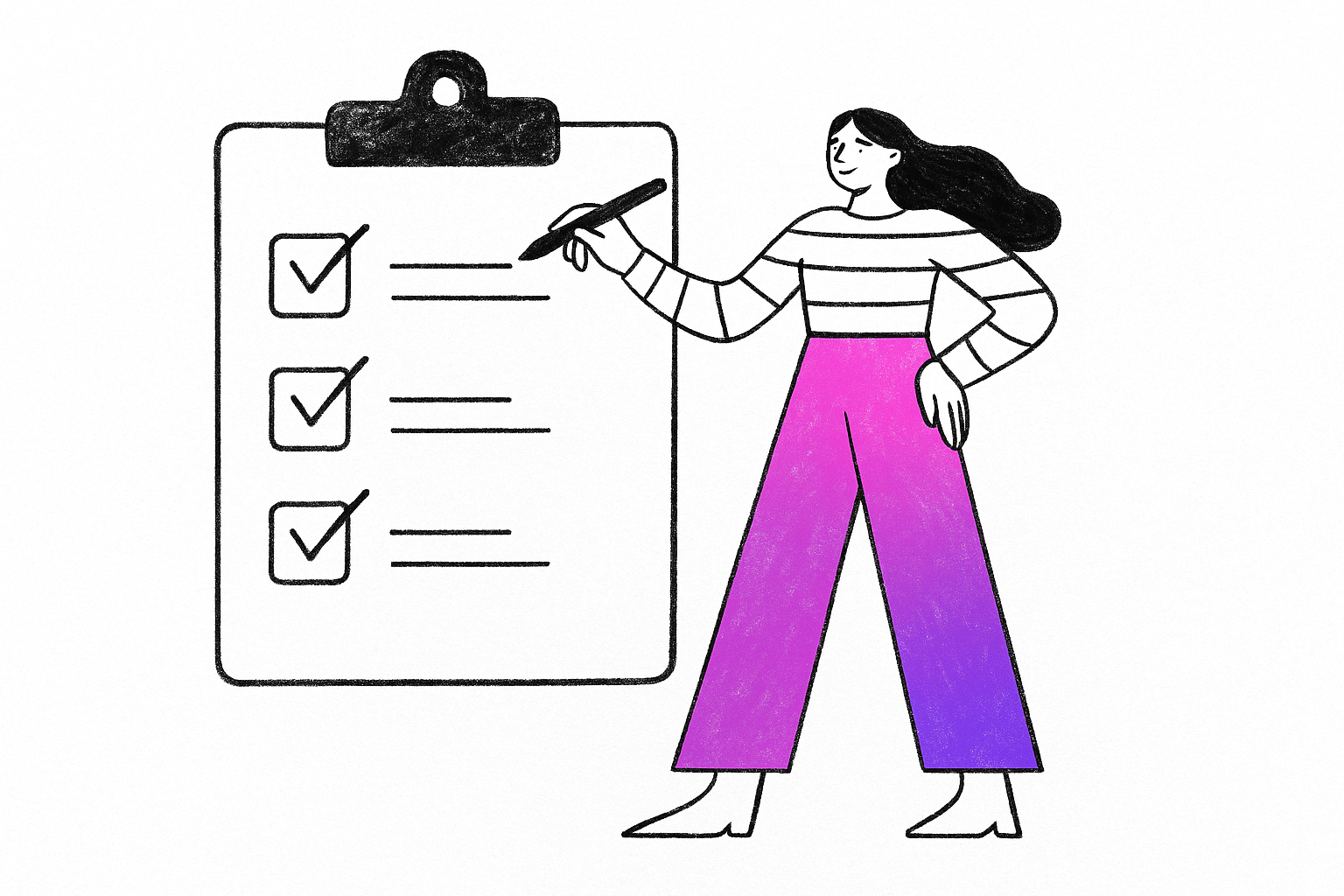The countdown to June 28, 2025, is more than a deadline—it’s a digital reckoning. That’s when the European Accessibility Act (EAA) becomes enforceable, introducing sweeping changes that will redefine software accessibility compliance across the UK and beyond. Despite Brexit, UK businesses that sell into the EU—or want to future-proof their software against rising expectations—cannot afford to ignore these changes. This isn’t just about websites anymore; it’s about ensuring your software, platforms, and digital tools meet WCAG 2.1 AA standards and comply with a growing legal and ethical imperative. This guide breaks down exactly what software accessibility compliance means, how the EAA compares to the UK’s Equality Act, and what practical steps you need to take now to stay compliant and competitive.
For UK businesses, it’s tempting to dismiss this as an “EU problem,” a piece of post-Brexit bureaucracy that no longer applies. This is a critical and potentially costly mistake. The EAA’s influence transcends borders, directly impacting any UK company selling into the European Union and indirectly setting a new global benchmark for what is considered a quality, legally defensible digital product.4
The landscape is cluttered with confusing acronyms—WCAG, EAA, the Equality Act—leaving many business leaders uncertain about their true obligations. This guide cuts through the noise. It provides a clear, definitive explanation of the new rules, clarifies how they impact your UK operations, and offers a practical roadmap for transforming this regulatory challenge into a powerful competitive advantage. The era of treating accessibility as a footnote is over; it is now a core requirement for market access and business strategy.
- Audio Podcast Overview
- The Ground Rules—Distinguishing WCAG from the EAA
- The UK Connection: How EU Law Impacts Your Business Post-Brexit
- Beyond Websites: Why Your Software is Now Under the Microscope
- The £274 Billion Reason to Care: The Business Case for Accessibility
- Your Practical Roadmap to EAA Compliance for UK Software
- From Regulatory Mandate to Strategic Advantage
- Let’s Make Accessibility a Competitive Advantage
- Book a Meeting for a Custom Solution
Audio Podcast Overview

The Ground Rules—Distinguishing WCAG from the EAA
To navigate the new landscape, it’s essential to first understand the key players. The terms WCAG and EAA are often used interchangeably, but they represent two distinct and complementary concepts. One is the architect’s blueprint; the other is the building code with the force of law.
WCAG—The Architect’s Blueprint for Accessibility
The Web Content Accessibility Guidelines (WCAG) are a set of internationally recognised technical standards developed to make digital content accessible to people with disabilities.6 Think of WCAG as the detailed “how-to” manual for building an accessible digital product. It is not a law in itself, but it becomes legally relevant when laws and regulations cite it as the required standard.6
WCAG is built on four foundational principles, known by the acronym POUR:
- Perceivable: Information and user interface components must be presentable to users in ways they can perceive. This means content cannot be invisible to all of their senses, requiring alternatives like alt text for images or captions for videos.6
- Operable: Users must be able to operate the interface. The interface cannot require interaction that a user cannot perform, such as being fully navigable with a keyboard alone.6
- Understandable: Information and the operation of the user interface must be understandable. The content should be clear, predictable, and avoid causing confusion.6
- Robust: Content must be robust enough that it can be interpreted reliably by a wide variety of user agents, including assistive technologies like screen readers. As technologies evolve, the content should remain accessible.6
These guidelines have different conformance levels: A (basic), AA (intermediate), and AAA (advanced). For nearly all legal purposes, including the EAA, WCAG 2.1 Level AA is the established benchmark for compliance.3
The EAA—The Building Code with Legal Force
The European Accessibility Act (EAA) is a legally binding EU directive designed to harmonise accessibility rules across all member states.1 Its primary goal is to dismantle digital barriers for the 1.3 billion people globally with disabilities and, in doing so, create a single, unified market for accessible products and services.4 This harmonisation benefits businesses by replacing a confusing patchwork of national regulations with one clear set of rules, reducing compliance costs and simplifying access to the entire EU market.2

How They Work Together: A Symbiotic Relationship
The EAA and WCAG are not in opposition; they are partners. The EAA provides the legal mandate—the “you must”—while WCAG provides the technical framework—the “how-to.”
An effective analogy is in construction. The EAA is the law stating that all new public buildings must be accessible to people with disabilities. WCAG, in this scenario, is the detailed architectural plan that specifies the required width of doorways, the gradient of ramps, and the placement of tactile paving to meet that legal requirement.
Therefore, the relationship is simple and direct: to comply with the digital accessibility requirements of the European Accessibility Act, your products and services must conform to the technical standards outlined in WCAG 2.1 Level AA.6
| Feature | Web Content Accessibility Guidelines (WCAG) | European Accessibility Act (EAA) |
| Type | International Technical Standard / Guideline | Legally Binding EU Directive |
| Core Function | Provides the ‘how-to’ technical specifications for accessibility (The Blueprint) | Provides the ‘must-do’ legal requirement to be accessible (The Law) |
| Legal Status | Not legally binding on its own; becomes mandatory when cited by law.6 | Legally binding and enforceable in all EU member states.1 |
| Scope | Primarily digital content: websites, apps, documents, software.6 | Broad range of digital and physical products and services (e.g., computers, e-commerce, banking, smartphones).2 |
| Enforcement | No inherent enforcement mechanism. | Enforced by designated authorities in each EU member state, with penalties for non-compliance.2 |
The UK Connection: How EU Law Impacts Your Business Post-Brexit
For any UK-based business leader, the critical question is: “What does this mean for me?” The answer is nuanced but clear—the EAA has both direct and indirect impacts that no UK business can afford to ignore.
The Direct Impact—If You Sell to the EU, Compliance is Not Optional
The EAA’s reach is determined by the location of the consumer, not the seller. If your UK-based company offers any in-scope products or services to customers within any EU member state, you are legally required to comply with the EAA.2 This operates on the same principle as the General Data Protection Regulation (GDPR); just as UK businesses handling EU citizen data must adhere to GDPR, those selling digital goods into the EU market must meet EAA standards.9
This applies to a wide range of private-sector firms, including any business with at least 10 employees and a turnover exceeding €2 million that trades in the EU.2 The consequences of non-compliance are severe and determined by each member state, but they can include substantial fines, court orders to withdraw products from the market, legal action from individuals or advocacy groups, and irreparable brand damage.1
The Indirect Impact—The UK’s Equality Act 2010 and the Rising Tide
For businesses operating exclusively within the UK, the situation is more subtle but no less significant. The primary domestic legislation is the Equality Act 2010, which requires all service providers—both public and private—to make “reasonable adjustments” to ensure that people with disabilities are not placed at a “substantial disadvantage”.1
Historically, what constitutes a “reasonable adjustment” for digital services has been open to interpretation. However, the EAA changes this calculus entirely. By establishing WCAG 2.1 AA as the legal standard for the entire European market, it creates a powerful, undeniable benchmark for what is now considered “reasonable”.1 After June 2025, it will become increasingly difficult to argue in a UK court that meeting a standard lower than the one adopted by the entire continent is a “reasonable” effort.
This creates a de facto global standard. For efficiency, multinational companies will not maintain separate, less-accessible versions of their software for the UK market; they will standardise on the EAA-compliant version.4 As a result, UK consumers will grow accustomed to this higher level of accessibility. A UK-only app or software platform that fails to meet this expectation will be perceived as inferior, outdated, and exclusionary. This market-driven pressure means that even UK-only businesses that ignore the EAA risk not only legal challenges under the Equality Act 2010 but also the loss of customers to more forward-thinking competitors.
Beyond Websites: Why Your Software is Now Under the Microscope
The conversation around digital accessibility has long been dominated by websites. The EAA definitively ends this limited view, placing a wide range of software, applications, and digital platforms squarely under the regulatory microscope.
The EAA’s Expansive Scope
The Act’s coverage is extensive and targets the core of modern digital infrastructure. For businesses that build, sell, or commission software, the following products and services are now in scope:
- Computers and their operating systems 2
- Smartphones, tablets, and other consumer telecommunication devices 2
- E-commerce platforms, including both websites and mobile applications 2
- Consumer banking services and their digital interfaces 1
- E-books and the dedicated software used to read them 2
- Self-service terminals such as ATMs, ticketing machines, and check-in kiosks, all of which run on complex software 1
This list makes it clear: if your business is involved in software development, the EAA applies to you.

The Hidden Risk—Your Supply Chain and Third-Party Integrations
One of the most significant and overlooked risks under the EAA is the concept of shared responsibility. A business is accountable for the accessibility of the entire service it delivers to the end-user, and this includes components developed by third parties.15
Consider a typical business application. It might integrate a third-party payment gateway, a mapping API from Google, a customer support chat widget, or an embedded video player from Vimeo. If any one of these third-party components is inaccessible, the entire application can be deemed non-compliant, and the liability rests with the company providing the final service.15 You cannot simply blame your vendor.
This reality creates a chain of liability that flows through the entire digital supply chain. It transforms technology procurement from a feature- and cost-based decision into a compliance-gated process. Businesses must now rigorously vet their vendors for accessibility. A crucial tool in this process is the Voluntary Product Accessibility Template (VPAT®), a document that details a product’s conformance with accessibility standards. Demanding and reviewing a VPAT from any potential software vendor is no longer just a best practice; it is an essential risk mitigation strategy.15 This new dynamic elevates the role of a development partner from a simple coder to a strategic technology architect, capable of designing a fully compliant and defensible technology stack.
The £274 Billion Reason to Care: The Business Case for Accessibility
While the legal penalties for non-compliance are a powerful motivator, the commercial opportunity presented by accessibility is even more compelling. Proactively embracing digital inclusion is not a cost centre; it is one of the highest-return investments a business can make.
Tapping into a Vast, Underserved Market
In the UK, there are 16 million people with a disability.16 The combined annual spending power of these individuals and their households—known as the
“Purple Pound” is a staggering £274 billion.16 Yet, this market remains profoundly underserved.
Research shows that 71% of disabled users will simply abandon a website or application that presents them with accessibility barriers.20 This mass exodus of potential customers, termed the
“Click-Away Pound” costs UK businesses an estimated £17.1 billion in lost revenue every year.18 This is not theoretical money; it is revenue being actively left on the table for accessible competitors to capture.
The Astonishing Return on Investment (ROI)
The financial case for accessibility is backed by hard data. A landmark report by Forrester Research found that for every $1 invested in accessibility, businesses can see a return of up to $100.11 This remarkable ROI is realised through increased market share, higher conversion rates, and enhanced brand loyalty.
Real-world case studies prove the point:
- Tesco: Invested a modest £35,000 to build an accessible website and saw its online revenue grow to £13 million per year as a result.11
- Legal & General Group: After a comprehensive accessibility overhaul, the financial services company saw its online sales double, organic search traffic increase by 50%, and achieved a 100% return on its investment within the first year.11
The “Curb-Cut Effect”—Improving the Experience for Everyone
A core principle of inclusive design is that features created for users with disabilities often result in a better experience for everyone. This phenomenon is known as the “curb-cut effect,” named after the sloped ramps in pavements that were designed for wheelchair users but are now used by people with prams, delivery carts, and suitcases.
In the digital world, this effect is everywhere:
- Video Captions: Essential for users who are deaf or hard of hearing, but also used by millions of people watching videos in a noisy office, on public transport, or with the sound off.20
- High-Contrast Design: Crucial for users with low vision, but also makes a screen significantly easier to read for anyone in bright sunlight.24
- Clear, Simple Navigation: A necessity for users with cognitive disabilities, but it also reduces bounce rates and improves conversion for all users by making a site easier to use.25
The Strategic Advantages—Brand, SEO, and Innovation
The benefits of accessibility extend deep into core business strategy:
- Brand Enhancement: A public commitment to accessibility is a powerful demonstration of Corporate Social Responsibility (CSR), strengthening brand image and building deep loyalty with socially conscious consumers.25 Research shows that companies that champion disability inclusion achieve 28% higher revenue and 30% better profit margins than their peers.21
- SEO Boost: Many accessibility best practices are also SEO best practices. Properly structured headings, descriptive alt text for images, video transcripts, and clean, semantic code make your content more understandable to search engine crawlers, directly improving your rankings.11
- Driving Innovation: Solving accessibility challenges often forces teams to think differently, leading to mainstream technological breakthroughs. Voice control and AI-powered image recognition both have roots in research originally done to assist users with disabilities.27
Ultimately, building an accessible product requires a rigorous, empathetic, and user-centric design process. This discipline doesn’t just produce a compliant product; it produces a better product—one that is more robust, intuitive, and thoughtfully constructed for all users.
Your Practical Roadmap to EAA Compliance for UK Software
Moving from understanding to action requires a clear, strategic framework. This five-step checklist synthesises best practices for navigating the path to compliance and turning it into a sustainable advantage.

Your UK Business Accessibility Compliance Checklist
Step 1: ASSESS—Understand Your Position
- ☐ Conduct a Comprehensive Digital Audit: Go beyond the homepage. Your review must cover all digital assets, including software, mobile apps, websites, and internal platforms, testing them against WCAG 2.1 AA standards.4
- ☐ Engage Your Legal Team: Get formal advice on how the EAA and the UK’s Equality Act 2010 apply specifically to your products, services, and customer markets.2
- ☐ Document Everything: If you plan to claim an exemption, such as for “disproportionate burden,” be aware that this requires a formal assessment and robust documentation to be presented to authorities. It is not a casual loophole.1
Step 2: STRATEGISE—Create Your Action Plan
- ☐ Develop a Remediation Plan: Based on your audit findings, create a prioritised roadmap. Address the most critical, high-impact accessibility barriers first.9
- ☐ Assign Clear Ownership: Accessibility cannot succeed as a side project. Appoint an internal champion or establish a dedicated team to drive the initiative and ensure accountability across the organisation.3
- ☐ Build the Business Case: Use the powerful data on market size (£274 billion) and ROI (up to 100:1) to secure the necessary budget and buy-in from senior leadership.11
Step 3: IMPLEMENT—Build an Accessible Culture
- ☐ Remediate and Build: Fix the issues in your existing products while ensuring that all new development is built with accessibility in mind from day one. Retrofitting accessibility issues later can be up to 100 times more expensive than building it in from the start.2
- ☐ Train Your Teams: Provide continuous training for your developers, designers, content creators, and QA testers on accessibility requirements and best practices. This embeds accessibility into your company culture.1
Step 4: VERIFY—Test and Validate Your Supply Chain
- ☐ Conduct Regular Testing: Your testing protocol must include a mix of automated scanning tools and, most importantly, manual testing by real users with disabilities. This is the only way to identify the real-world barriers that automated tools miss.1
- ☐ Vet Your Vendors: Before integrating any third-party software, API, or widget, demand to see their accessibility conformance documentation, such as a VPAT®. Write explicit accessibility compliance clauses into your supplier contracts.1
Step 5: COMMUNICATE & MAINTAIN—Demonstrate and Evolve
- ☐ Publish a Compliant Accessibility Statement: This is a legal requirement in many contexts. Your statement must be easy to find, be written in clear language, be honest about any known issues, and provide a clear contact method for users to report problems.2
- ☐ Monitor and Iterate: Accessibility is not a one-time project; it is an ongoing commitment. Establish a process for regular monitoring, periodic audits, and integrating accessibility checks into every new release cycle to maintain compliance as your software evolves.3
From Regulatory Mandate to Strategic Advantage
The June 2025 deadline for the European Accessibility Act is a watershed moment. It signals the end of digital exclusion as an acceptable business practice and establishes inclusive design as a fundamental pillar of commerce in the UK and Europe.
The choice for business leaders is not about whether to incur a cost, but whether to make a strategic investment. The path of inaction leads to legal risk, market irrelevance, and a brand defined by exclusion. The path of proactive engagement, however, leads to innovation, enhanced brand loyalty, and access to a £274 billion market of underserved consumers. It is a choice between foresight and hindsight.
Navigating the complexities of the EAA and the Equality Act requires more than a simple code fix—it demands a strategic partner. At Source Code Studio, we don’t just build compliant software; we build strategic assets that future-proof your business and open doors to new growth. Contact us today to start your accessibility journey.
Let’s Make Accessibility a Competitive Advantage
The 2025 accessibility deadline isn’t just a compliance issue—it’s a moment of opportunity. Businesses that act now can turn regulatory readiness into a distinct strategic edge. At SourceCodeStudio, we don’t just help you meet the requirements of software accessibility compliance—we help you build future-ready, inclusive platforms that scale with your ambitions. Whether you need an audit, remediation plan, or a complete software overhaul, our team is here to guide you. Book your free consultation today and let’s ensure your software opens doors, not barriers.
Custom Software Agency based in Suffolk
Book a Meeting for a Custom Solution
Works cited
- A new milestone for accessibility – the European Accessibility Act …, accessed on August 1, 2025, https://www.traverssmith.com/knowledge/knowledge-container/a-new-milestone-for-accessibility-the-european-accessibility-act-now-applies/
- FAQs about the EAA | AbilityNet, accessed on August 1, 2025, https://abilitynet.org.uk/resources/european-accessibility-act/eaa-faqs
- The Law is Changing on Digital Accessibility Compliance: Are you Ready? – UC Today, accessed on August 1, 2025, https://www.uctoday.com/unified-communications/the-law-is-changing-on-digital-accessibility-compliance-are-you-ready-8×8/
- The European Accessibility Act (EAA) – what businesses need to know and do., accessed on August 1, 2025, https://businessdisabilityforum.org.uk/resource/the-european-accessibility-act-eaa-what-businesses-need-to-know-and-do/
- EU Accessibility Act ‘a wake-up call’ to business – Pinsent Masons, accessed on August 1, 2025, https://www.pinsentmasons.com/out-law/news/eu-accessibility-act-wake-up-call-business
- WCAG Vs EAA – What are the differences? – Recite Me, accessed on August 1, 2025, https://reciteme.com/news/wcag-vs-eaa/
- Overview of UK accessibility laws for websites – Siteimprove, accessed on August 1, 2025, https://www.siteimprove.com/glossary/uk-accessibility-laws/
- What You Need to Know About UK Web Accessibility Regulations – accessiBe, accessed on August 1, 2025, https://accessibe.com/compliance/uk-regulations
- The European Accessibility Act (EAA): What your business needs to know | Texthelp, accessed on August 1, 2025, https://www.texthelp.com/resources/blog/the-european-accessibility-act-eaa-what-your-business-needs-to-know/
- EAA Compliance: Your Ultimate Guide to the European Accessibility Act, accessed on August 1, 2025, https://www.accessibilitychecker.org/guides/eaa-compliance/
- The Business Case for Digital Accessibility: A Revenue-Generating Investment – TestParty, accessed on August 1, 2025, https://testparty.ai/blog/the-business-case-for-digital-accessibility
- European Accessibility Act (EAA) & B2B: What you need to know – Siteimprove, accessed on August 1, 2025, https://www.siteimprove.com/blog/what-eaa-means-for-b2b/
- U.K. Web Accessibility Laws: Compliance & Best Practices, accessed on August 1, 2025, https://www.levelaccess.com/blog/website-accessibility-laws-in-the-u-k/
- UK Digital Accessibility: Legal Requirements – CDP Communications Inc., accessed on August 1, 2025, https://cdpcom.com/uk-digital-accessibility-legal-requirements/
- Understanding EAA Compliance for Third-party Content – Level Access, accessed on August 1, 2025, https://www.levelaccess.com/blog/eaa-third-party-content/
- Accessibility of products and services to disabled people – Women and Equalities Committee – Parliament UK, accessed on August 1, 2025, https://publications.parliament.uk/pa/cm5804/cmselect/cmwomeq/605/report.html
- The purple pound – accessibility and inclusion is good business | SeeAbility, accessed on August 1, 2025, https://www.seeability.org/news/purple-pound-accessibility-and-inclusion-good-business
- What is the Purple Pound? – Charity Digital, accessed on August 1, 2025, https://charitydigital.org.uk/topics/what-is-the-purple-pound-11430
- publications.parliament.uk, accessed on August 1, 2025, https://publications.parliament.uk/pa/cm5804/cmselect/cmwomeq/605/report.html#:~:text=There%20are%20an%20estimated%2016,year%20to%20the%20UK%20economy.
- The ROI of web accessibility – Silktide, accessed on August 1, 2025, https://silktide.com/blog/the-roi-of-web-accessibility/
- The Business Case for Digital Accessibility.docx – AbilityNet, accessed on August 1, 2025, https://abilitynet.org.uk/sites/abilitynet.org.uk/files/The%20Business%20Case%20for%20Digital%20Accessibility_0.docx
- What’s the ROI of Web Accessibility? – Bureau of Internet Accessibility, accessed on August 1, 2025, https://www.boia.org/blog/roi-of-web-accessibility
- Make Your Business Case for Website Accessibility, accessed on August 1, 2025, https://theweco.com/accessibility-resources/web-accessibility-business-case/
- The business case for web accessibility in 2024 – Digital Marketing Agency, accessed on August 1, 2025, https://hallam.agency/blog/the-business-case-for-web-accessibility-in-2024/
- Top Four Benefits of Web Accessibility – accessiBe, accessed on August 1, 2025, https://accessibe.com/blog/knowledgebase/benefits-of-web-accessibility
- The Business Case for Website Accessibility – Lumar, accessed on August 1, 2025, https://www.lumar.io/blog/best-practice/business-case-for-website-accessibility/
- The Business Case for Digital Accessibility | Web Accessibility Initiative (WAI) – W3C, accessed on August 1, 2025, https://www.w3.org/WAI/business-case/
- How accessibility benefits your business – Business Disability Forum, accessed on August 1, 2025, https://businessdisabilityforum.org.uk/resource/technology-toolkit/how-accessibility-benefits-your-business/







